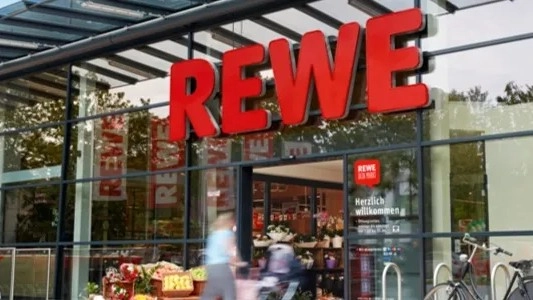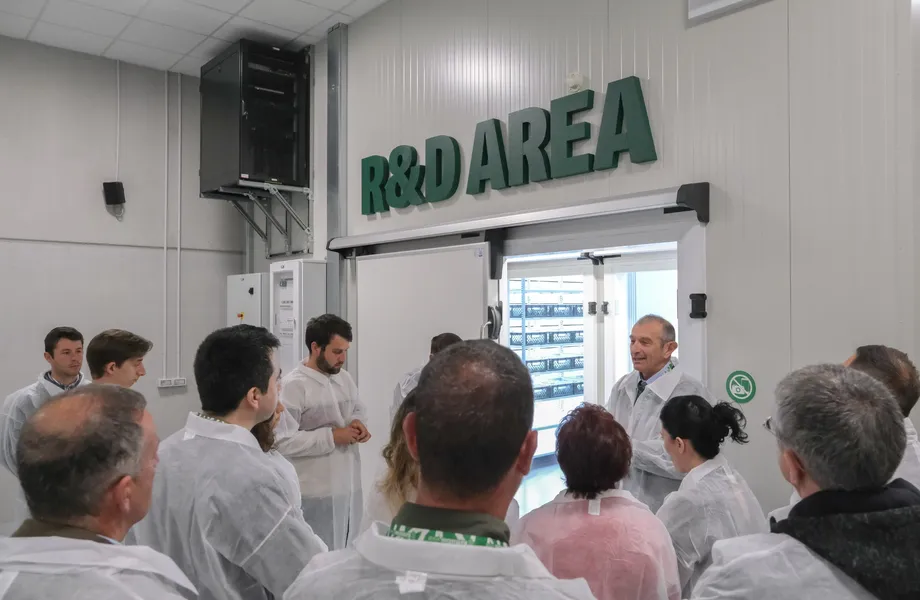Demand for blueberries is increasing, so aggressive marketing can boost sales even after the U.S. domestic season ends.
The area under cultivation is growing, not only in the main import source regions, such as Peru and Mexico, but also in other parts of the world. Imports have made blueberries a year-round staple for many American consumers. As many consumers, especially younger ones, focus on healthier eating or increasing the percentage of plant-based foods in their meals, blueberries have a ready audience that can be convinced to make them a more regular part of their meals.
Cross-marketing and even usage signage suggestions can encourage shoppers to pair blueberries with yogurt for breakfast, smoothies for lunch, and salads for dinner, and can enliven any meal throughout the day.
Marc Goldman, product manager at Morton Williams Supermarkets , Bronx, N.Y., says that promotions on blueberries can be relatively effective during both the U.S. and import seasons, although imports have a disadvantage, which is actually not much different.
"The difference is that the imported blueberries are normally a 6-ounce (170g) container. They do not sell as well as the 1-pint (500g) ones. Also, in the U.S. season they will sell much more than what is imported." However, he adds, "if the quality is good and the price is right, I will promote it."
At Bargain Grocery , Utica, NY, When the blueberries s arrive, they are marketed with high visibility to attract consumers' attention. "We make a display in the center aisle to highlight them," says Mike Servello. "For a good price, they move very quickly."

IMPORTS FROM MORE COUNTRIES ON THE RISE
The import season, with higher volume coming from Mexico, Peru and Chile, overlaps more with U.S. production, according to Tony Colonna, berry category manager at William J. Kopke Jr. Inc. Ltd., Great Neck, New York.
"The South American season starts harvesting in July and goes on until March," Colonna explains. "Mexico normally starts in August and goes on until June. The overlap with U.S. production continues to increase. The most significant overlaps are in March/April and August/September."
Imports to the United States are increasing year by year, and there is "significant growth" from Peru and Mexico, according to Colonna.
At Naturipe, Salinas, CA, imported berries come from Chile, Peru, Uruguay, Argentina and Mexico. "Naturipe starts importing berries in September and usually finishes around April or May," says Jim Roberts, president of sales.

THE CULTIVATED AREA IS STILL INCREASING
"In general, the volume of imports has increased, as has the area under cultivation, particularly in Peru and Mexico," says Helena Beckett, director of sales for Giddings Berries USA, the subsidiary of Giddings Fruit based in Monterey, Calif. "We're seeing acreage investments in the countries closest to the U.S. market."
"The key season for us is from September to February. The Peruvian season overlaps with the end of the U.S./Canada season," Beckett adds. "Peru and Chile are our main sources of imports."
The overlap with the U.S. season is pronounced, with imports lengthening their timetable. "Imports from Peru are getting ahead of schedule. This season they started arriving in June/July, with significant volume starting in September," says Phil Rindone, berry sales manager at Pandol Brothers , Delano, Calif. "This is due to a number of factors, including the slowdown in the European and Asian economies this year and increased production in Peru."
"Mexican production occurs in two main phases, ranging from late summer to May." He added that the area under cultivation is growing, not only in key import regions such as Peru and Mexico, but also in other parts of the world.
At Naturipe, Roberts says availability and quality will be especially strong in October, November and early December, with FOB market prices similar to last year's during the October-November peak periods.
"We expect to see lower volumes in December and early January, as Peru is down and Chile is a couple of weeks behind last year. By mid-January, we expect Chile to peak production and Mexico's volumes to increase around February and March," Roberts adds.
The U.S. economy is still under pressure from inflation, so at least some effect on imported blueberries is expected. "Inflationary pressures are affecting costs in general," Beckett says.
In AJ Trucco , Bronx, NY, imports start from Peru and move to Chile in January, says Tony Biondo, sales manager. He notes that the volume of imports has increased compared to previous years, although the cold weather has caused the harvest to be lower than initially expected. However, prices made up for the drop in harvest due to increased demand.
"Consumption of blueberries has increased everywhere because of the health benefits," he says.
For all intents and purposes, blueberries is now a year-round staple food, and Biondo says that imports, and particularly Peru, where growers have adopted new varieties and growing conditions are nearly ideal, are a primary source.

HOW TO INCREASE THE BLUEBERRIES
With increased expectations of finding fruit, blueberries have seen an increase in consumer demand, Beckett says. In response to produce departments, good handling practices must underpin in-store merchandising.
"The blueberries should be marketed refrigerated and, ideally, consumers should be able to choose between a conventional and an organic option," notes Beckett. "Cross-marketing with other berries or a companion product makes sense, as long as refrigeration is available."
Basic merchandising is a family affair, and Biondi says that positioning blueberries along with other berries, particularly strawberries, is important in the import season to capture the attention of consumers, including children.
Rindone of Pandol Brothers agrees that blueberries can benefit from promotions that employ their extended family. Retailers can therefore benefit from "berry patch" advertisements that promote multiple berries at once, as well as large package presentations, including 18-ounce (510g) and 24-ounce (680g) .
According to Biondi, price promotions are important to increase and sustain sales of blueberries throughout the calendar. "It's a great time to promote blueberries because the price is so reasonable," he says, "whether it's a reduced price of one pint, two for the price of one or one for free."
Although demand is increasing, fruit and vegetable departments can maintain momentum by keeping imported blueberries the focus of shoppers' attention. "In the past, blueberries was a top item in spring and summer, in line with domestic production," explains Colonna de Kopke. "With the significant increase in volumes from South America and Mexico, we see promotional opportunities 12 months out of the year. Large packs have been more consistent throughout the year and this trend will continue."

In fact, "January is a great month to promote imports of blueberries, " says Beckett. "There is a strong supply from Chile and Peru, and consumers are focused on renewing their healthy eating habits after the holiday season. It's a great time to capture organic sales because consumer commitment to wellness is at its peak, it's more likely to reverse around this time, and there's plenty of supply to support your renewed good habits."
Retailers should not change their basic marketing strategy for blueberries when the domestic season gives way to the import sales period.
"Retailers can promote imported and domestic berries equally," says Naturipe's Roberts. "Because the berry category is now the largest product category, we advise our retailers to create a fall berry zone in the produce department. This will highlight seasonal berries, including blueberries, in one place. We also recommend that retailers highlight all the benefits of blueberries: they are rich in antioxidants, high in manganese and an excellent source of fiber, regardless of where they come from."
NEW NOTIONS
It might be a good idea to provide consumers with ideas for other uses, recipes, and simple reminders that blueberries are a great addition to everything from breakfast cereals to ice cream to baked goods.
"The blueberries are great for snacks, desserts, smoothies and so on," says Colonna. "Promotions for blueberries can include all of these applications. Promotions should reflect the time of the season. During the Thanksgiving/Christmas season, promote blueberries for holiday baking, etc.
According to Beckett, blueberries have great appeal, but consumers focus on cooking when the weather changes. Thus, the key to merchandising is the preferred style of cooking in the import season, when cold, outdoor-oriented dishes give way to warm, comforting ones.
Source: Blueberries Consulting
Blueberries Consulting is part of the global network of Italian Berry






